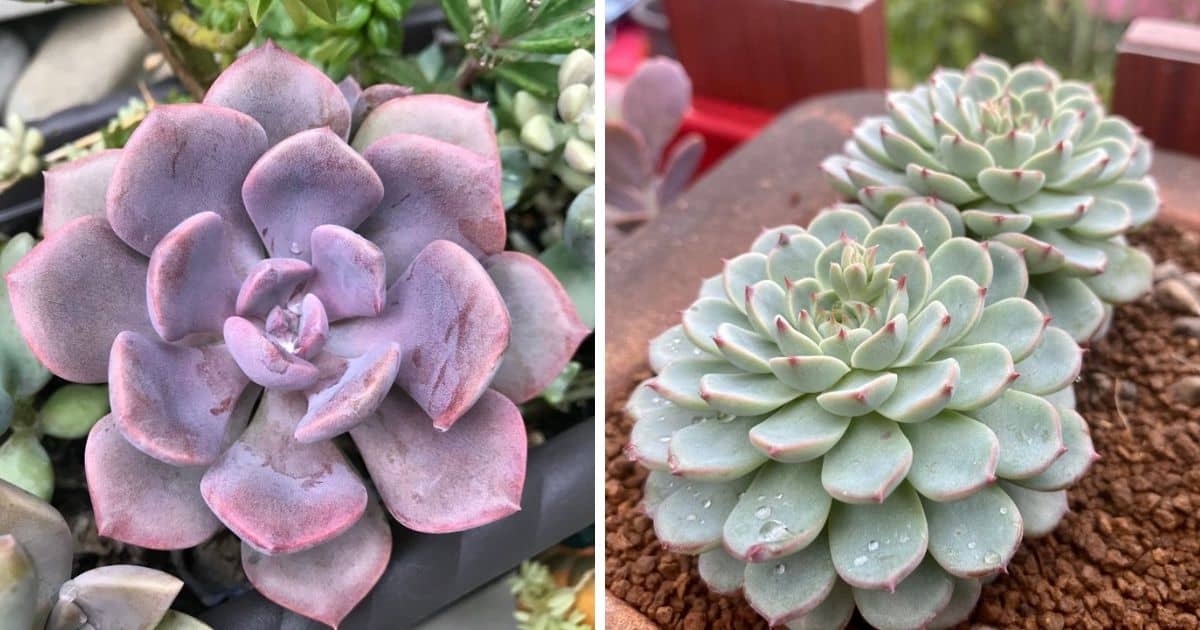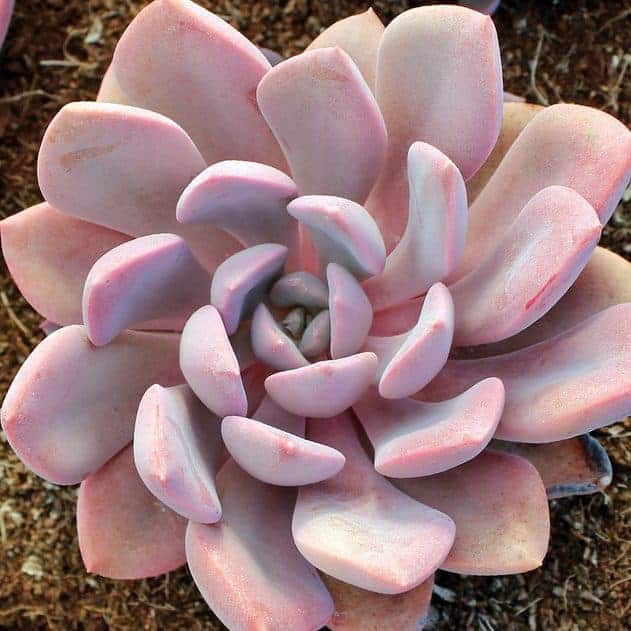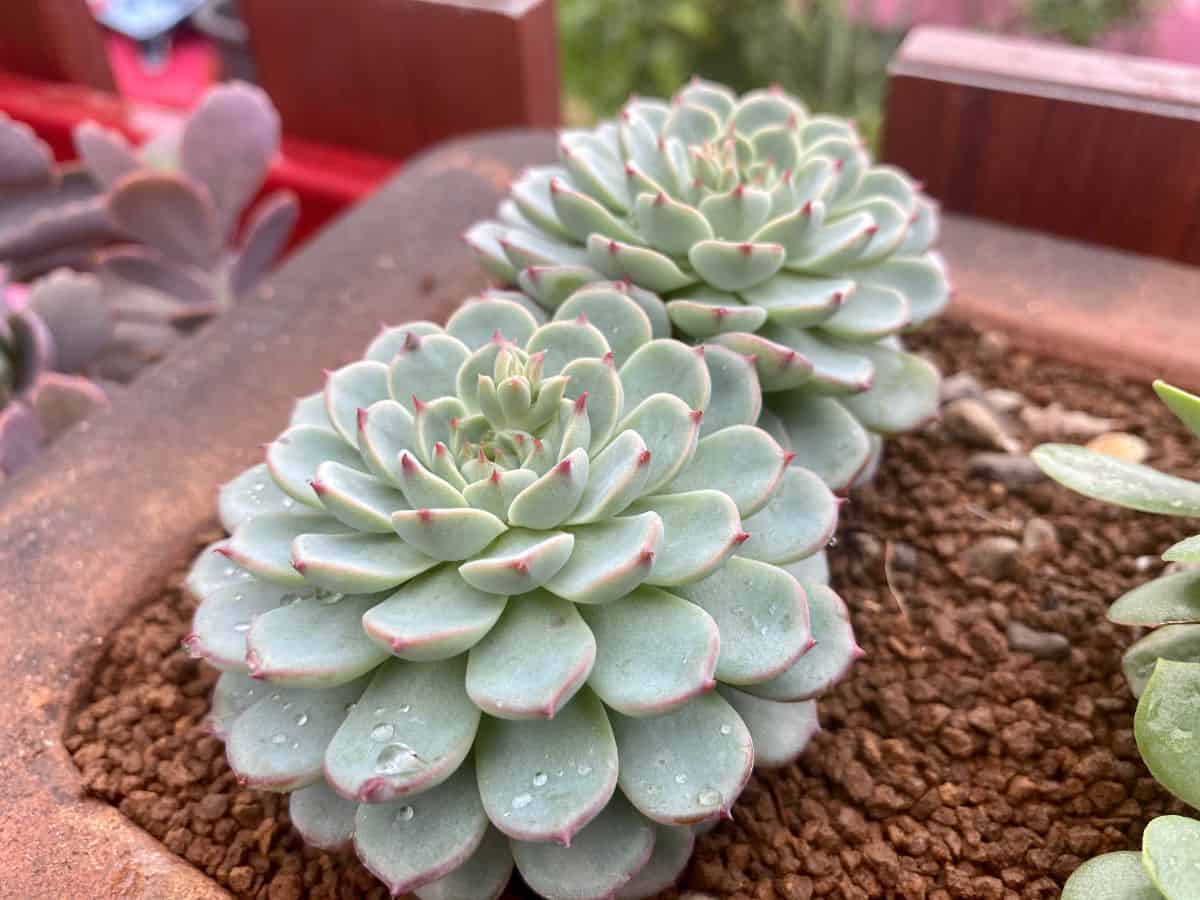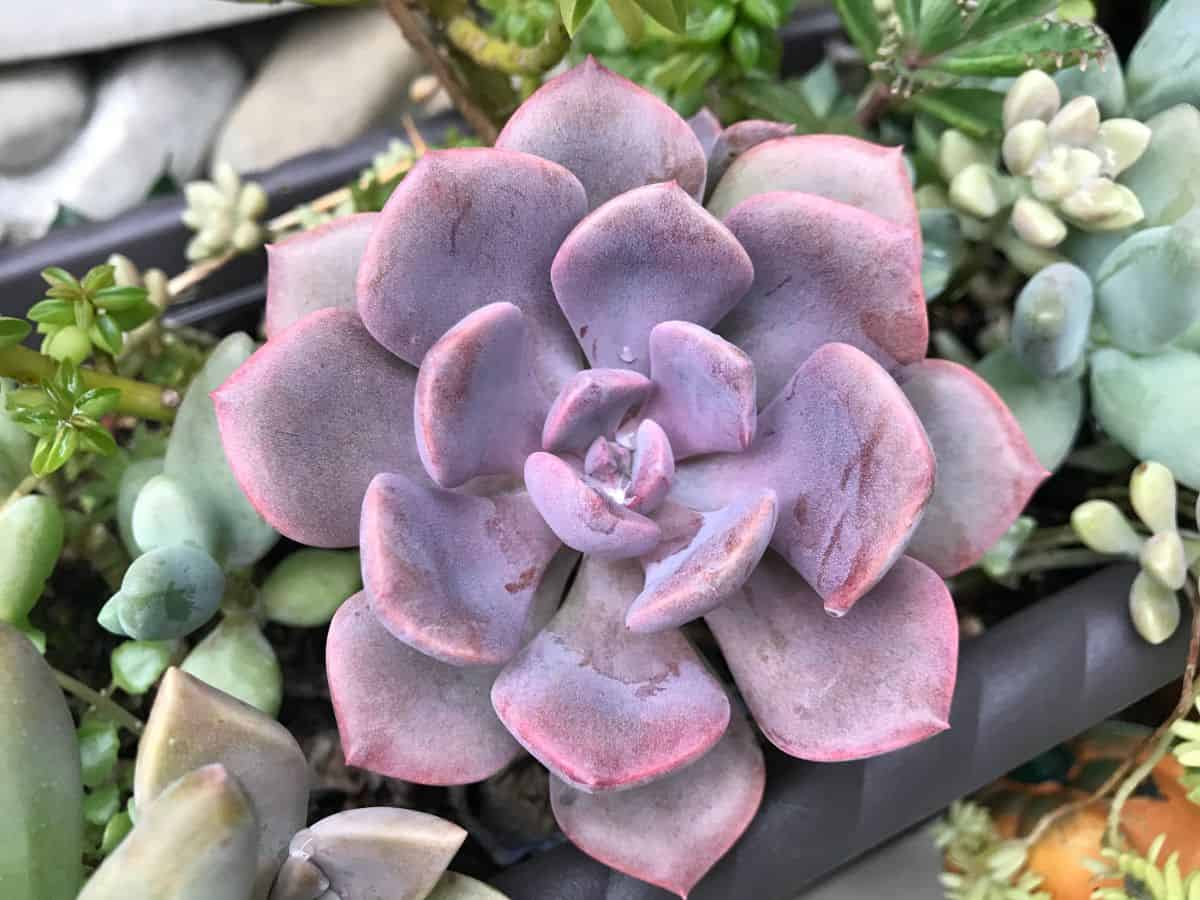So, you want to be a succulent expert, right? Well, one of the first steps you must take is to learn how to accurately identify plants. You now know the difference between Yucca and Agave, Aloe and Agave, and Aloe and Haworthia. But can you tell the difference between Echeveria and Graptoveria?

It’s time to take a closer look at both Echeveria and Graptoveria. At first glance, they can look quite similar, but there are a few key differences. There are plenty of similarities, however, so it’s easy to understand why so many people mix them up. When it comes to identifying plants, paying attention to the details is essential.
As you may or may not already know, Graptoveria is actually a hybrid succulent. It’s a cross between Echeveria and Graptopetalum. You may notice some nurseries refer to this plant as x Graptoveria. The ‘x’ signifies that the plant is a hybrid.
If you’re unfamiliar with hybrid succulents, it’s important to understand that hybridization is not an easy process. To create a hybrid, one species of plant must be artificially pollinated by another species of plant. This can be quite difficult due to different blooming seasons and the unpredictable results of sexual reproduction. You can’t always predict what the hybrids will look like.
This also explains why Graptoveria can sometimes closely resemble Echeveria. Since they are genetically related, some cultivars can look nearly identical to their parent plants. It should also be noted that most hybrids are sterile, so they cannot be used to breed future generations of the same plant. For a more in-depth explanation of succulent hybrids, click here.
Jump to:
Differences Between Echeveria and Graptoveria

One of the most notable difference between these two species of succulent is the thickness of their leaves. As you may notice, Graptopetalum typically have rather thick leaves. contrast, Echeveria tend to have more delicate leaves. Echeveria leaves aren’t exactly thin, but they are noticeably thinner than those of Graptopetalum.
The thickness of an unidentified plant’s leaves can help you to decide whether it’s Echeveria or Graptoveria. Plants with particularly thick leaves are more likely to be Graptoveria, due to the thickness inherited from the Graptopetalum parent plant.
No products found.
Most types of Echeveria have smooth leaves that end in a point. This isn’t always true, however, as some varieties have more rounded leaves, or even curly leaves. Depending on what variety of Graptopetalum was used to create the Graptoveria in question, the plant may have leaves similar in shape to Echeveria, or the leaves may be rounder and more bulbous. The exact shape of the leaf may not give you the exact answer you’re looking for in terms of identification, but it will point you in the right direction.
Similarities Between Echeveria and Graptoveria

Not all of the similarities shared by these plants are visible. Both plants originate from the same general area of the world. Echeveria are native to the Americas, namely Mexico, Central America, and northwestern South America. Graptopetalum, on the other hand, can be found mainly in Mexico and American Southwest. Although their country of origin doesn’t help you differentiate the plants, it does give you an idea of the type of climate they’re used to which is useful in terms of care.
Regardless of whether your plant is Echeveria or Graptoveria, the care it requires remains the same. As with most succulents, both species enjoy plenty of sun with well-draining soil and infrequent water. Neither are particularly frost-hardy, so if you’re expecting frigid temperatures, you’ll need to protect your plants or bring them inside.
Both plants grow their leaves in a rosette pattern, so it’s easy to understand how they can be mistaken for one another. As previously mentioned, the leaves of Echeveria and Graptoveria can be quite similar. If the hybrid takes after its Echeveria parent, the leaves can be nearly identical to those of Echeveria.
The color of the leaves can also make identification rather difficult. Echeveria are available in nearly every color of the rainbow. From pale pink to black, there's an Echeveria for every color palette. Graptopetalum can also be quite colorful, so when they are crossed with Echeveria to create Graptoveria, the color possibilities are nearly endless. You may be noticing a pattern here when it comes to identifying hybrids...
If your mystery plant is in bloom, you may be thinking that the color of the flowers will give you a positive identification. Unfortunately, though flower color does vary between different cultivars, it won’t help you identify your plant. Both plants produce similarly shaped clusters of petite flowers. The most common color of flower for both Echeveria and Graptoveria is peachy-pink or orange, but they can also be white or yellow.
Conclusion

As you may have noticed, there are no definitive characteristics to accurately identify a plant as either Echeveria or Graptoveria. Using what you know about each species will help you make an educated guess, but even succulent experts occasionally get it wrong. Some plants may be easy to identify, while others may be more difficult, especially if it's a hybrid.
Identifying hybrids is a difficult task, so don’t feel bad if you aren’t 100% certain whether your plant is Echeveria or Graptoveria. Since both plants require similar care, it shouldn’t matter if you can’t identify a mystery plant. If you really need to know, you can always seek the advice of more experienced gardeners or ask your local nursery staff.
Learning to properly identify succulents is a skill that takes time to develop. If you’re interested in honing your skills, head to your local nursery and try to identify the succulents before looking at their labels. With time and practice, your educated guesses will become more and more accurate, even with those tricky hybrids.


David Spaulding
In the article The Difference Between Echeveria and Graptoveria...
The first picture at the top has four Echevreia.
Do you happen to know the ID of the plant on the top right.. looks a little curly and neon?